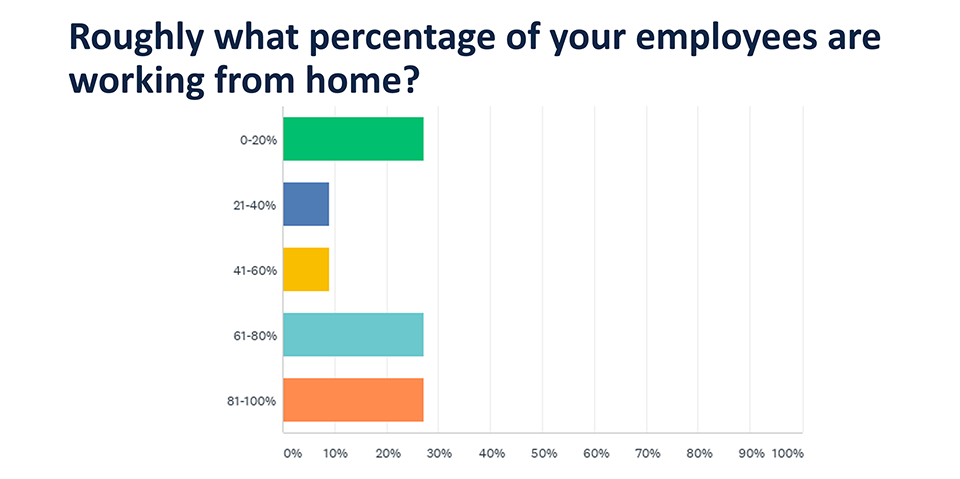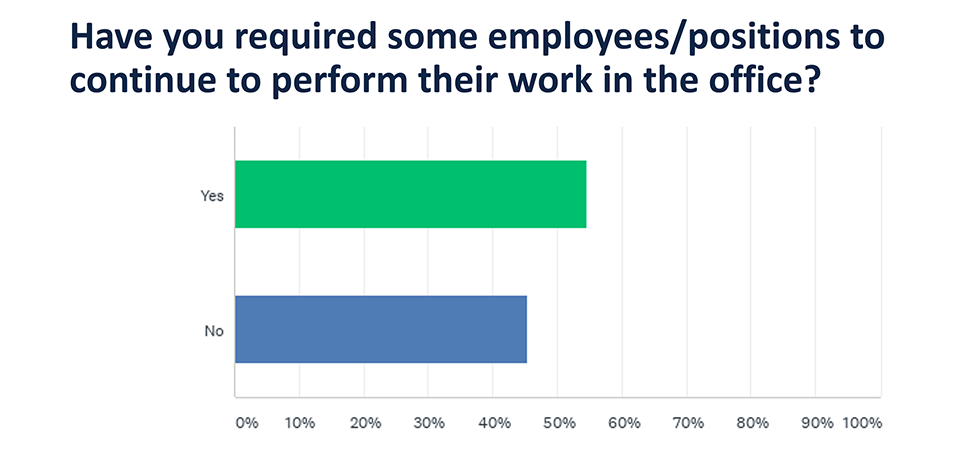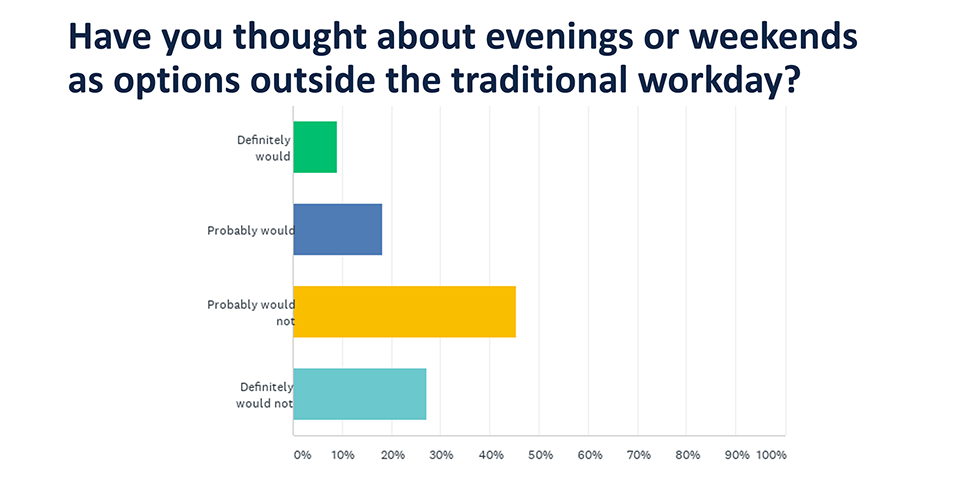How Security Industry Companies Are Returning to Work and Working from Home

Lessons from our respondents: Be flexible. Use technology. Watch for burnout. Be connected.
The Security Industry Association recently surveyed the industry, along with the support of the Electronic Security Association and The Monitoring Association, to find out how firms were managing remote work and thinking about returning to the office following the COVID-19 pandemic. Here’s what we learned from our work-from-home and return-to-work survey:
Who Responded: Manufacturers and Integrators
The survey was responded to largely by companies that produce products, software or other solutions (54.5%), with integrators/dealers/installing companies being the second-most responsive at 18.2 percent; outside sales/rep firms were 9.1 percent of respondents, and the rest self-classified as “other.”
The surveyed was mostly answered by small and mid-size firms: Over a third (33.4%) were companies with 25 or fewer employees, and approximately half (45.5%) were mid-size firms with 26-100 employees.
Where and When Employees Are Working
According to survey respondents, it seems that most companies are working from home, with more than 54 percent of companies saying that 61 percent or more of their workers are working from home and with 27.3 percent of companies indicating that 81 to 100 percent of their workers are remote.

Asked whether they had required some employees to continue to work in the office, more than half (55%) said they had required office presence from some employees, but some 45 percent of companies said they had not required some employees or positions to continue to perform some work in their offices. Roles specifically mentioned as still being required to perform in the office included technical support, shipping and receiving staff, technicians, locksmiths, production, some management, accounting and others handling order processing. One employer indicated that even with employees who had required in-facility work, they had developed a hybrid model which allowed only minimal in-facility work time.


Managing a Remote Workforce
While managing remote work can be challenging, responding firms were taking the challenge in stride by measuring employees’ productivity in the usual ways: through completion of assigned work by deadline, productivity reports and tracking sales numbers and responsiveness. Some companies, however, said they were using the same or similar tools for time and productivity management but were reconsidering that it might take more time to complete certain processes. Most companies said they had adapted their existing time sheets or time tracking solutions to support a remote workforce.
Company representatives said they are working hard to keep their staff engaged, choosing weekly video calls via tools like Microsoft Teams and Zoom complete with company updates, meeting in breakout groups, hosting game nights and other fun activities and even sending meals to employees through tools like Grubhub. Internal communication has been leveraging team and instant communication tools like Slack and messaging apps like Skype, as well as collaboration tools like Google Docs.
Returning to the Office
Returning to the office is the big question mark for many companies, and some firms plan to use rotating schedules (e.g., half of the office in one week, half in the following week), while others are giving employees a choice to come in or work from home for a period of time. Companies noted that they were following local guidelines, whether that was 25 percent or 50 percent occupancy, and phasing back in the return to office. One responding human resources leader, however, said the pandemic is likely to “permanently change the way we work” and that their company may leave it up to the manager and the employee in terms of how much time in the office will be required.
Employees With School-Age Children
Companies said that the previously-mentioned productivity and communication tools are also being used to maintain communication and check for employee burnout, especially for parents who are navigating the work-from-home environment and handling school-age children who are home doing online learning. Most companies also said they are planning to provide flexibility and adaptability for the schedules of parents with school-age children, particularly since some school districts have allowed distance learning, hybrid in-class/at-home learning models and/or limited class sizes. Some companies said they were also providing extra paid time off (PTO) at a lowered pay rate after parents use their accrued PTO. For parents unable to located day care, most companies said they were working directly with impact parents to provide flexible scheduling or adjustments to leave to accommodate such difficult situations.
